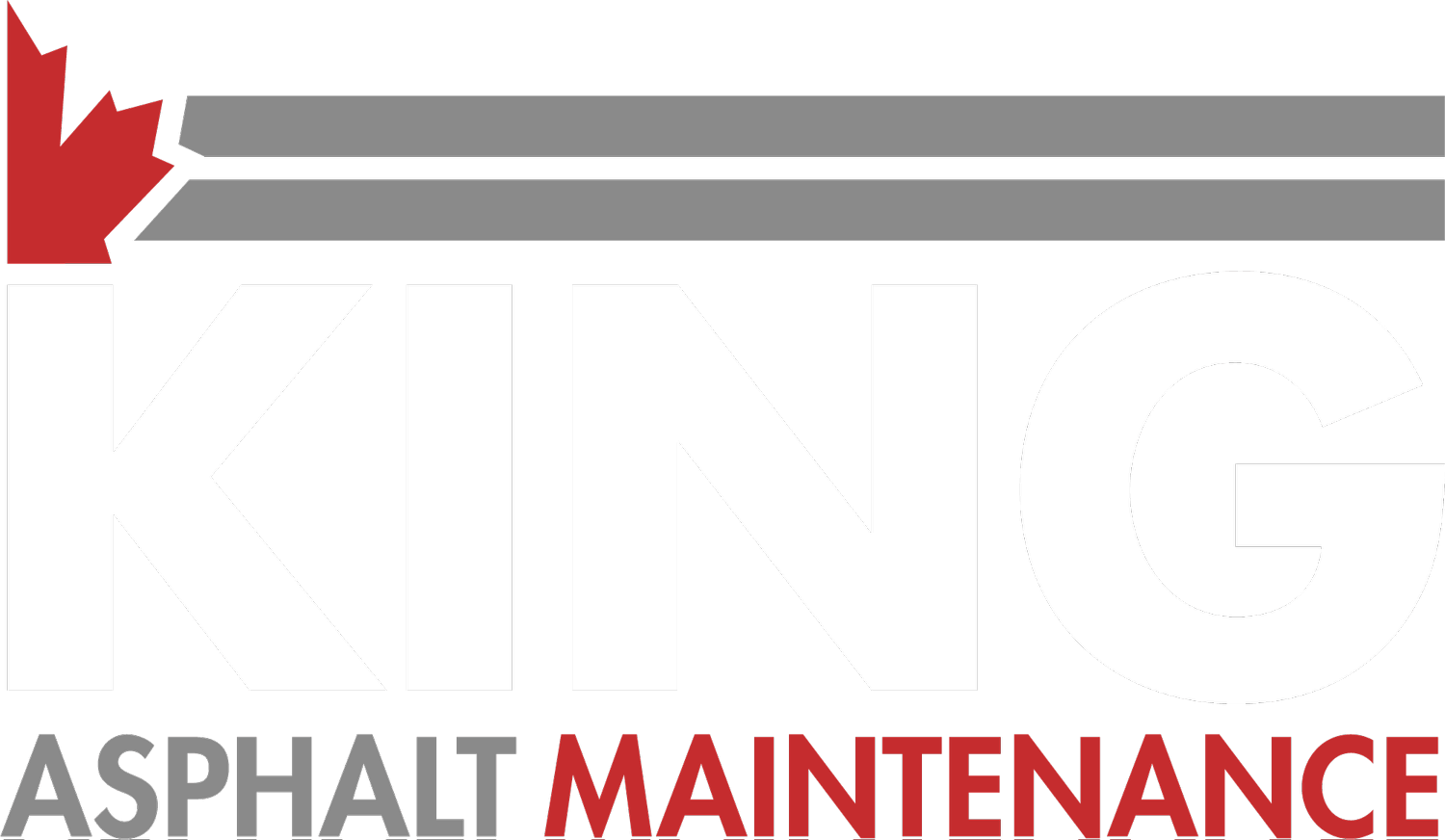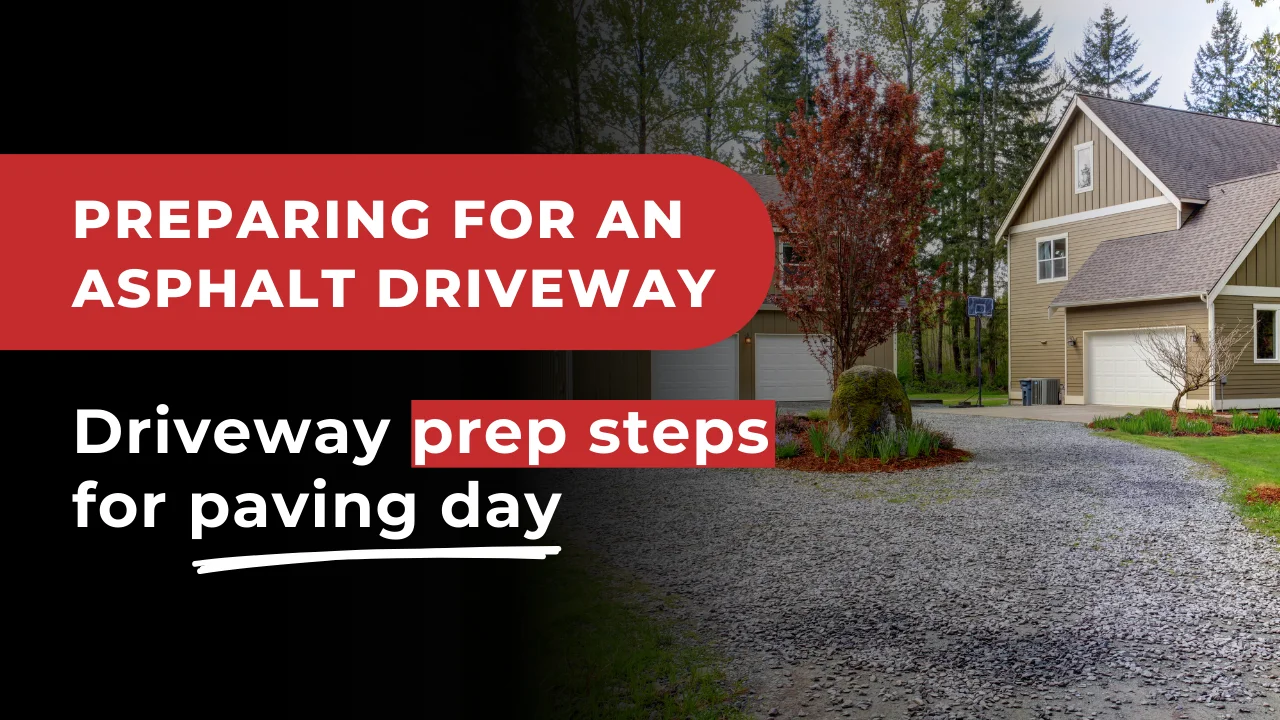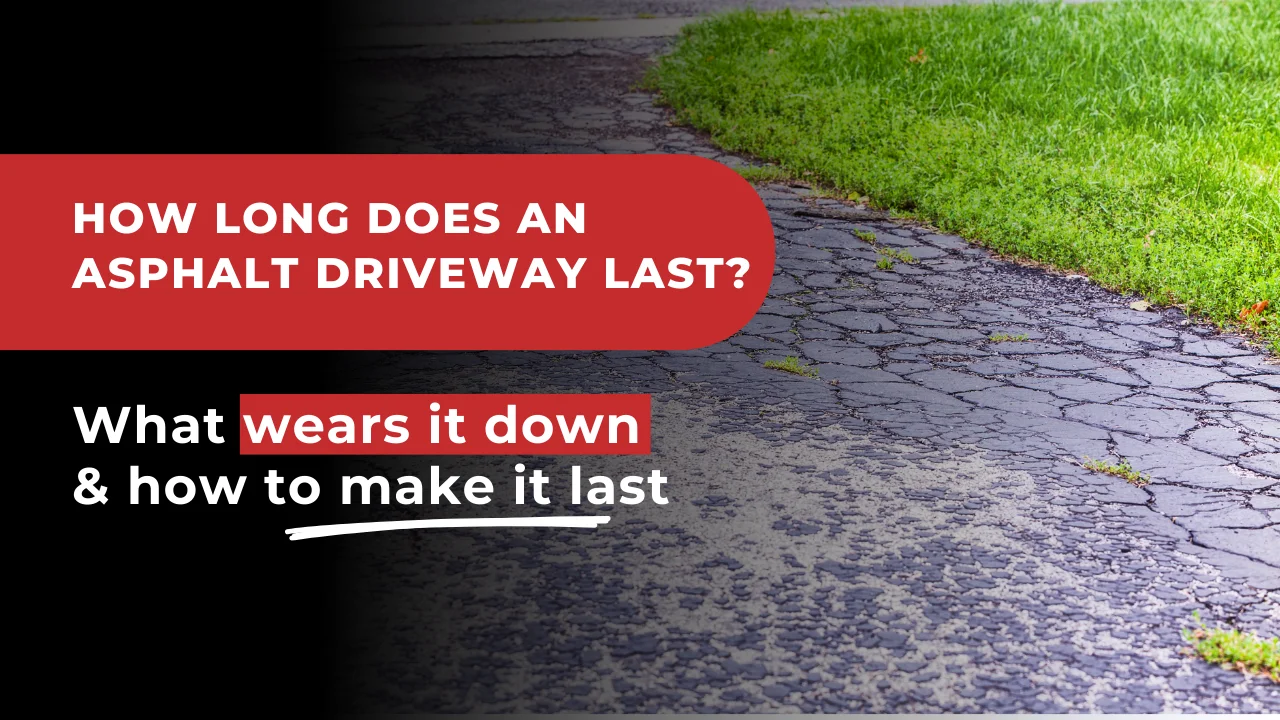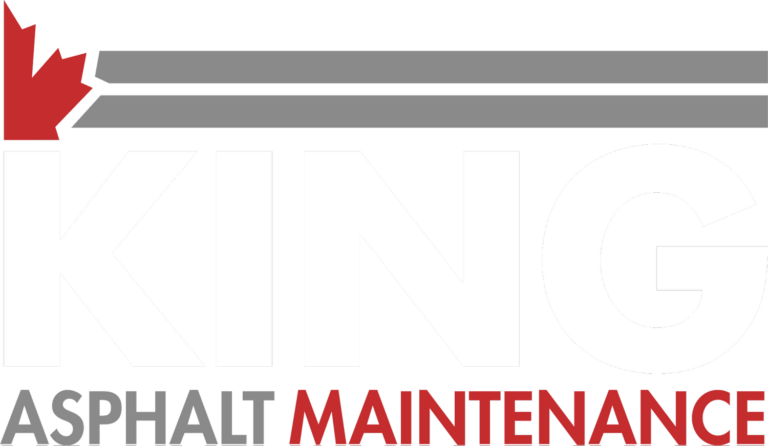Wondering if your driveway needs a full replacement or just a quick repair? You’re not alone. Homeowners often hesitate to pull the trigger because of cost, disruption, and uncertainty.
The truth is, spotting major issues early can save you from far greater expenses down the line. Here’s how to recognize when it’s more than surface wear and when replacement is the smart move.

1. Widespread, Deep Cracking (Alligator Cracks)
Minor cracks can often be sealed or patched. But when your driveway shows a network of deep, interconnected cracks, often called “alligator cracks”, it’s a sign the underlying base has failed.
Up to 75% of deep alligator cracking in residential driveways is tied to base layer failure, not surface wear.

Why it matters:
- Surface patching won’t fix structural base damage.
- Cracks allow water to infiltrate, making problems worse.
- Left untreated, the entire surface integrity declines.
Minor vs major cracking: small, isolated cracks = likely repairable. Deep, sprawling cracks = likely time for full driveway replacement.
2. Drainage Failures and Water Pooling
After a rain, does your driveway have standing water or puddles? That’s not only annoying, it’s a red flag.

Why it matters:
- Poor drainage erodes the base layer.
- Water accelerates crack expansion and surface heaving.
- Persistent pooling signals significant subsurface issues.
Poor drainage can cut driveway lifespan by 40–60%, especially when pooling water is present through freeze/thaw cycles.
Effective drainage is crucial for a driveway’s health. If it’s not working, driveway replacement (with corrected grading) is often the only lasting fix.
3. Significant Surface Heaving, Driveway Sinking, or Rutting
If your driveway feels uneven or has visible depressions, it’s a sign of deeper trouble.
Common causes:
- Freeze/thaw cycles
- Poor base compaction during original install
- Drainage failures causing soil movement
Minor settling can happen with time. But noticeable heaving, sinking, or rutting creates hazards for vehicles and people and often means the structure has been compromised beyond surface repair.
4. Age: When Time Alone Means Replacement
Even with great maintenance, asphalt driveways in Ontario typically last 15 to 20 years.
Factors that impact lifespan:
- Quality of original installation (base prep, compaction)
- Exposure to freeze/thaw cycles, salt, and heavy use
- Regular maintenance (like sealing)
Some driveways may “look okay” from a distance but suffer underlying base fatigue that only gets worse with time. If yours is nearing two decades old, it’s wise to start planning for driveway replacement before problems compound.
5. Frequent Repairs With No Lasting Results
Have you been patching cracks or potholes every couple of years only to see new problems pop up?

Signs your old driveway needs replacement and repairs won’t help:
- Repairs only last 1–2 years
- New cracks form alongside old patches
- Surface feels uneven despite maintenance
Cost math tip: Over five years, repeated repair bills can easily outweigh the cost of a full replacement of your driveway. More importantly, a new driveway protects your property value and eliminates ongoing headaches.
Quick Comparison: Asphalt vs. Concrete Aging
- Asphalt tends to show interconnected cracks and sinking as it ages.
- Concrete often displays surface flaking and isolated slab cracking.
Because asphalt flexes more than concrete, structural failures can appear sooner if drainage and base conditions aren’t ideal. (This post focuses on asphalt; concrete is a separate topic.)

Regional Factors: How Ontario Weather Speeds Up Driveway Damage
Ontario’s climate is tough on driveways:
- Freeze/thaw cycles expand cracks and heave surfaces.
- Road salt accelerates chemical wear.
- Heavy rains penetrate small cracks, eroding the base.
- Soil types (clay vs sandy loam) influence stability and drainage.
That’s why proper base preparation, not only the surface, is critical when replacing a driveway in Southern Ontario.
Wrap-Up: When It’s Time to Talk to a Pro
If you’re seeing deep cracks, water pooling, significant surface changes, repeated repair needs, or your driveway is 15+ years old, it’s probably time for a professional evaluation.
The goal isn’t to “sell a new driveway”, it’s to protect your property value, avoid compounding problems, and restore peace of mind.
Getting a proper assessment now can save you major headaches (and costs) down the road.
We Replace Asphalt Driveways for a Living
Ready to understand what a lasting, properly built driveway should deliver?
Explore our driveway paving approach and learn how a properly prepared base can add 10+ years to your driveway’s life.





